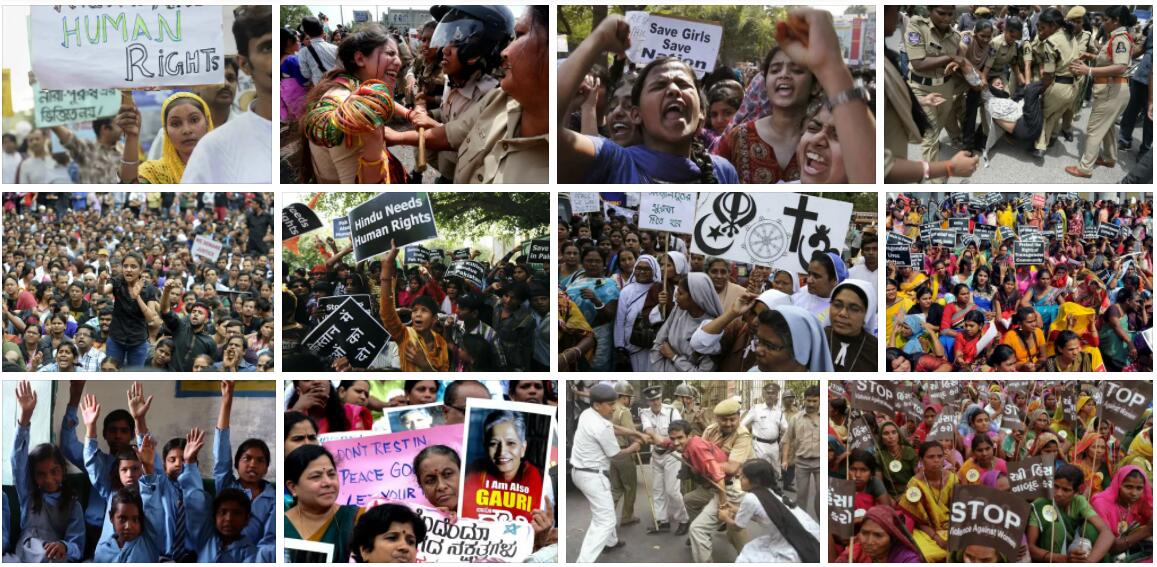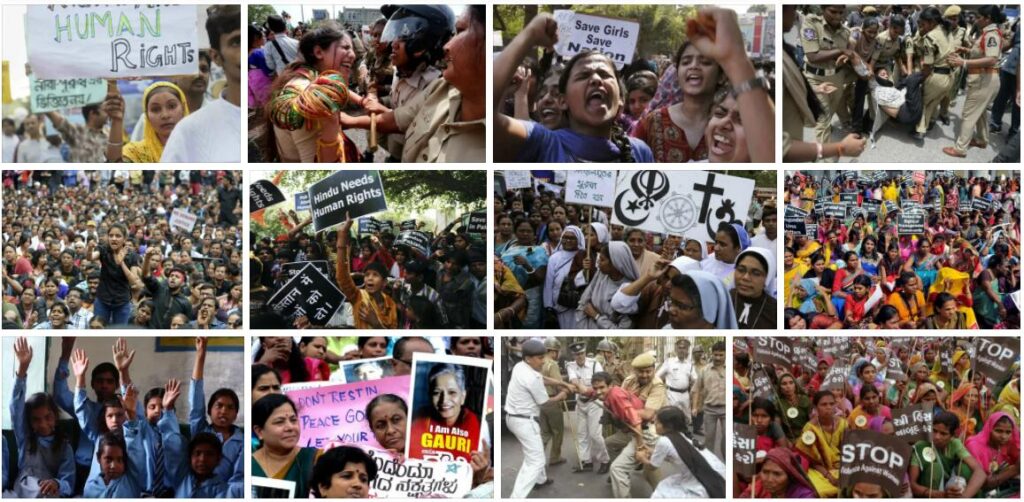India Domestic Issues
There are numerous domestic political challenges, the two most important of which have recently been in the Jammu and Kashmir region and building a temple in Ayodhya city:
Cashmere
In early August 2019, the Indian government lifted the special status of the state of Jammu and Kashmir and divided into two union territories with restricted powers: Jammu and Kashmir on one side, Ladakh on the other. The Modi government wants to increase its access to the area that has been disputed between Pakistan and India since 1947. Modi thus implemented an old demand of the BJP. In order to avoid unrest, the new Jammu and Kashmir were also blocked from going out and communicating (e.g. Internet access or visits from domestic and foreign journalists). With this step, Modi allegedly wants to accelerate the economic development of Jammu and Kashmir and fight terrorism there. Pakistan has strongly criticized this move and brought the matter before the United Nations Security Council.
Ayodhya
In November 2019, the Supreme Court of India declared in a momentous ruling that a temple in honor of the god Rama may be built in the north Indian city of Ayodhya. The site on which the temple is to be built has long been disputed between Hindus and Muslims. It is said that the 16th century mosque, which was demolished by fanatical Hindus in 1992, stood there on the ruins of an originally existing Rama temple. The ruling is controversial but is expressly welcomed by the Hindu nationalists. The building of a new Rama temple in Ayodhya was also one of Narendra Modi’s central election promises.
According to Thereligionfaqs.com, there is a risk that violent unrest between Hindu and Muslim religious groups will be fueled by the judgment.
Corruption
As in many other countries, corruption is widespread in India. In an international comparison, the extent of corruption is at a high level (80th place out of 180 countries in the Corruption Perception Index 2019 by Transparency International) and comes last among the countries in the Asia / Pacific region. Even if the fight against corruption under Prime Minister Narendra Modi is one of the main goals of government work, it has not yet been possible to systematically curb corruption in India.
In autumn 2010, what observers believe was the largest corruption scandal in the history of the Republic of India shook the country. The focus was on the former telecommunications minister A. Raja. Raja is said to have granted telecommunications licenses over the counter, resulting in revenue losses of an estimated 39 billion US dollars for the state. Most recently it became known that the well-known diamond dealer Nirav Modi is said to have defrauded the state-run Punjab National Bank by 1.43 billion dollars.
Regular corruption allegations against politicians from practically all parties show that corruption continues to be a social and highly political issue. The GAN anti-corruption portal offers a good overview of the various forms and the extent of corruption in India.
Human rights
Violent assaults against indigenous people and Dalits, violence against women and unpunished rape, millions of child laborers suffered millions of times, some of whom lead hard and short lives in debt bondage, or numerous attacks by the police are just a few examples of human rights violations, including Human Rights Watch, Amnesty International and the US Department of State report.
Official crime statistics can be found on the National Crime Records Bureau (NCRB) website.
Press and other public media
Freedom of the press is protected by the Indian Constitution, but journalists risk their lives reporting on politically or economically sensitive issues. Recently there have even been murders of journalists critical of the government, most recently the journalist Gauri Lankesh, who was shot by unknown perpetrators in front of her house in Bangalore in the summer of 2017. Many therefore see press freedom in India at risk. India already ranks 142nd out of 180 countries in terms of press freedom. The Indian press is not free from corruption as there are strong links between the press, politicians and business leaders.
Media: What’s on in India?
In India there is a large number of newspapers, both in English and in the many regional languages, with an overall very large readership. In the meantime, an impressive number of English-language daily and weekly newspapers or political magazines from India appear on the Internet, reporting on current topics.
- The Hindu
- The Times of India
- Hindustan Times
- The Economic Times offers business news.
- Frontline
- Tehelka
- Outlook India
Of course, there are many other newspapers and magazines in India that report in very different journalistic quality. The Wire is particularly recommended as an online medium.
Broadcasting is of particular importance for mass communication and entertainment. The television medium in particular has become a huge market for employment and advertising.
The number of Internet users is also increasing, to around 451 million per month in 2019, which puts it in second place worldwide behind China. The US news broadcaster CNN is even of the opinion that the future of the Internet lies in India. However, access to the Internet is subject to massive government restrictions. For example, Kashmir was without an internet connection for four months during the explosive political abolition of its special status. In 2018 and 2019, India even tops the list of countries that most frequently block access to the World Wide Web – 138 times in 2018.





